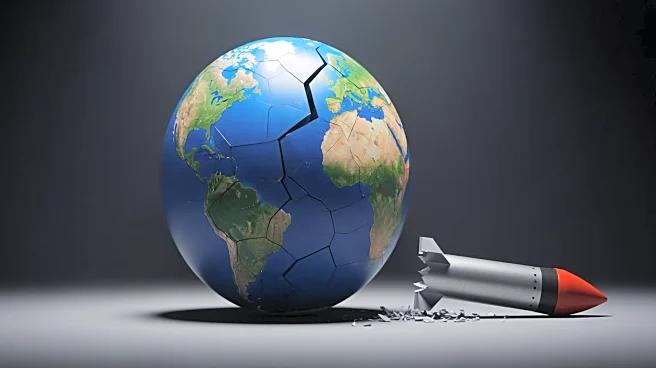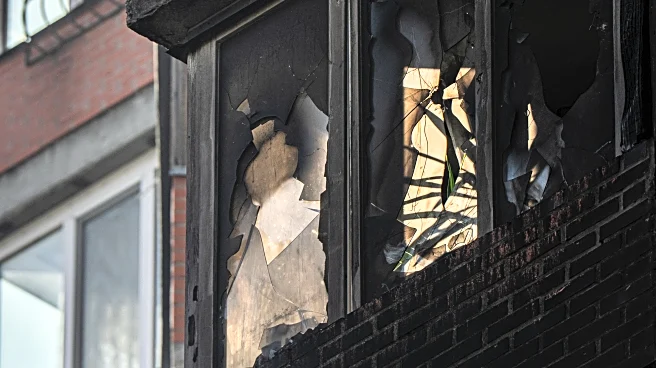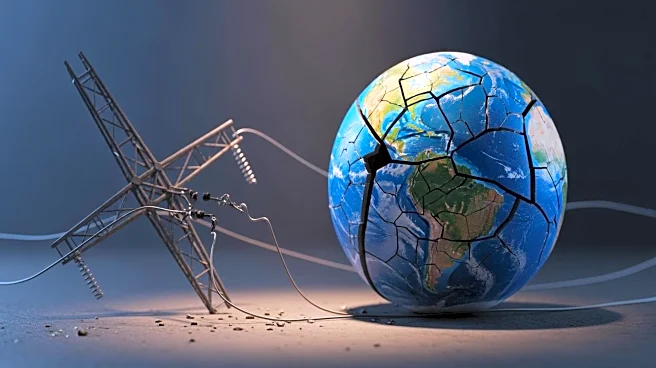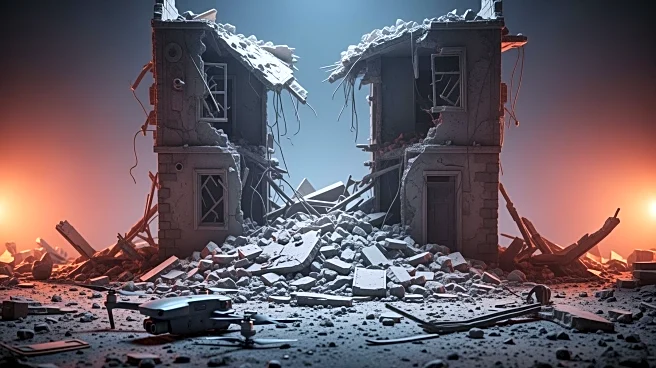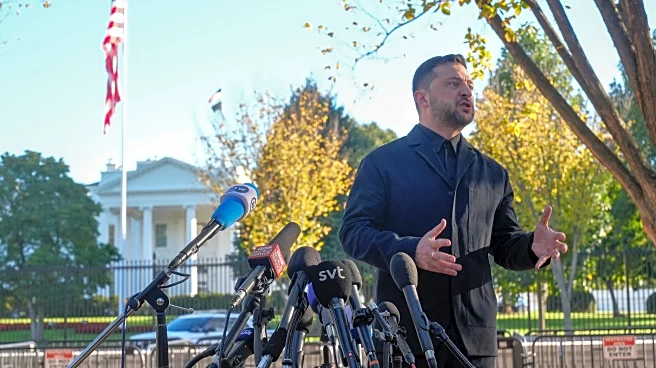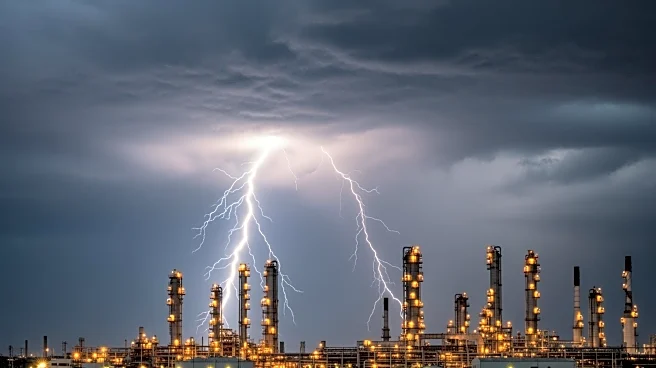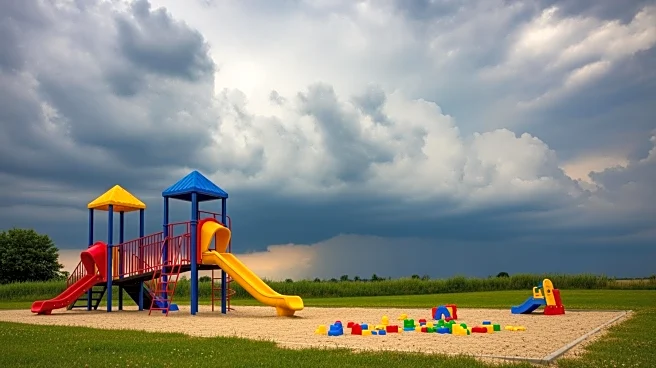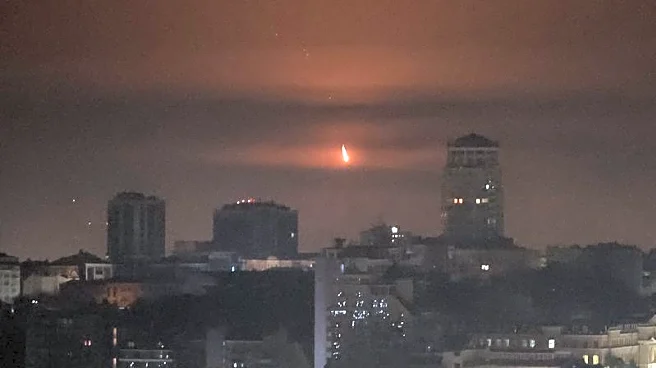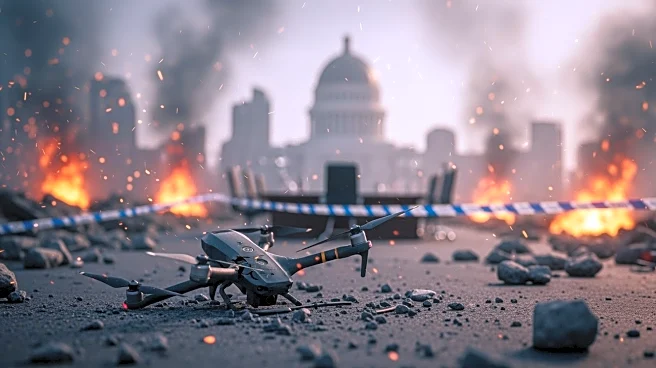What's Happening?
Russia launched a ballistic missile attack on Kyiv on October 25, resulting in at least two deaths and nine injuries. The attack, which occurred just before 4 a.m. local time, targeted various parts of
the city, causing significant damage to infrastructure. According to Tymur Tkachenko, head of the Kyiv City Military Administration, one of the injured later succumbed to their injuries in the hospital. The attack follows a recent pattern of intensified Russian strikes on Ukrainian energy infrastructure, which have led to blackouts as winter approaches. Ukraine's Air Force reported that nine Iskander-M ballistic missiles and 62 Shahed-type drones were launched, with air defenses intercepting 50 drones and four missiles. However, 12 drones and five missiles struck four locations, causing fires and damage in several districts.
Why It's Important?
The ongoing missile attacks on Kyiv highlight the persistent threat to civilian safety and infrastructure in Ukraine. These strikes exacerbate the humanitarian crisis, as they disrupt essential services and increase the risk of civilian casualties. The attacks also underscore the strategic importance of Ukraine's air defense capabilities and the need for continued international support. The escalation of hostilities could further strain diplomatic efforts to resolve the conflict and may lead to increased international pressure on Russia. The situation also poses challenges for Ukraine's government in maintaining public morale and ensuring the safety of its citizens amid ongoing aggression.
What's Next?
In response to the attacks, Ukraine is likely to seek additional support from international allies to bolster its air defense systems. The Ukrainian government may also intensify diplomatic efforts to secure further sanctions against Russia. The international community, particularly European nations and the United States, may consider additional measures to deter further aggression and support Ukraine's defense capabilities. The situation remains volatile, with the potential for further escalation if diplomatic solutions are not reached.


